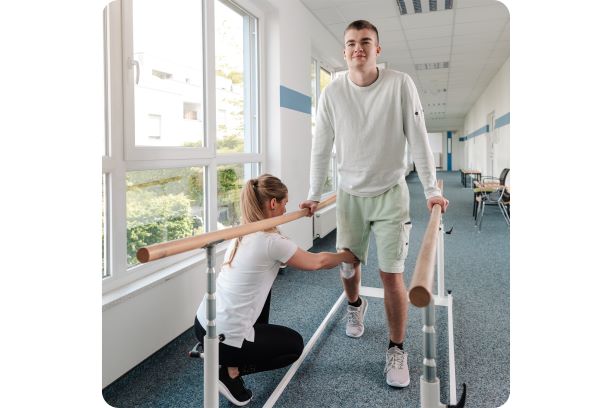ACL rehab is a grind after surgery. Your recovery will be slow and full of ups and downs. Only 63% of athletes will ever return to their previous level of sport. However, you can be better. This article tells you what to do during your first few weeks after surgery to help you get back to playing quickly.
Early Accelerated ACL Rehab is a Proven Approach
Most athletes have their injured ACL reconstructed with a graft from their patellar tendon. The patellar tendon graft heals quickly to your bone. This allows accelerated rehabilitation soon after your surgery. Early accelerated rehab results in quicker return of your full range of motion and strength.
A 2015 study published in the British Journal of Sports Medicine compared an accelerated progressive rehab program to a standard slower rehab program. Progression through this accelerated program is based on the athlete’s ability to pass several different functional tests. Two years after surgery, these athletes reported superior knee function, sport abilities, and quality of life.
To get off to a good start, it is important to concentrate on 4 different aspects of your early rehab. They are:
1. Control and reduce your swelling
2. Get your knee straight
3. “Turn on” your quadriceps muscle
4. Lose your limp
Step 1: Get Your Swelling Down
Immediately after surgery, it is normal for your knee to be swollen, stiff, and painful. It is important to manage the swelling in your knee. A light compression wrap is helpful for the first 7-10 days. We recommend icing your knee several times per day for 10-20 minutes until the swelling is down.
Gentle range of motion exercises will help move the swelling out of your knee. But you do not want to be overly aggressive with stretching your knee, especially with bending it. Gentle stationary cycling is performed daily. Also, do heel slide and wall slide exercises 3 times per day until you have full range of motion.
Step 2: Get Your Knee Straight
Properly managing your knee swelling will assist with straightening out your knee. However, you will also have to work at restoring the last few degrees. It is important to fully straighten your knee to the same degree as your uninjured knee.
If you do not get your knee straight, it will be nearly impossible to get all your strength back. Also, you will walk with a limp and develop problems that affect your hip and back. Be diligent in performing these knee straightening exercises at least 3 times per day.
Step 3: “Turn On” Your Quadriceps
Persistent quadriceps weakness plagues many athletes for years after ACL surgery. It is important to get this muscle firing early after your surgery. Controlling your swelling and getting your knee straight must occur to get your quad going. Your quadriceps muscle strength will be one of the keys to your getting back to sports.
Straight leg raises and knee extension exercises are performed early after surgery without any risk to your healing ACL graft. Your physical therapist will also supplement these exercises with neuromuscular electrical stimulation. This gives your quads a little boost until they are firing on all cylinders. Weight-bearing exercises like partial squats and step-ups are gradually introduced, provided your swelling is under control.
Step 4: Lose Your Limp
If your swelling is down, your knee is straight, and your quad is firing, then you are ready to walk without crutches. You will not be cleared to walk without crutches until you can walk without a limp. You must be walking normally without any compensation.
Losing your limp will require some assistance from your physical therapist. Several hands-on exercises are used to retrain your walking pattern. Also, cone and hurdle drills assist with bending your knee and promoting stability on your injured leg. Expect to be walking unassisted without a limp within 2 to 3 weeks of your surgery.
Your Physical Therapist Will Keep You Motivated and On-Track During Your ACL Rehab
ACL rehab is time-consuming as well as mentally and emotionally demanding. It starts before your surgery and can last for up to a year. Follow the 4 steps outlined in this article, and you will set yourself up for success.
You are going to need some support and guidance. Your physical therapist is your guide and will help you through the rough patches. Give us a call to get started with your rehab. The doctors of physical therapy at BSR have been helping injured athletes get back to their sport since 2007.


